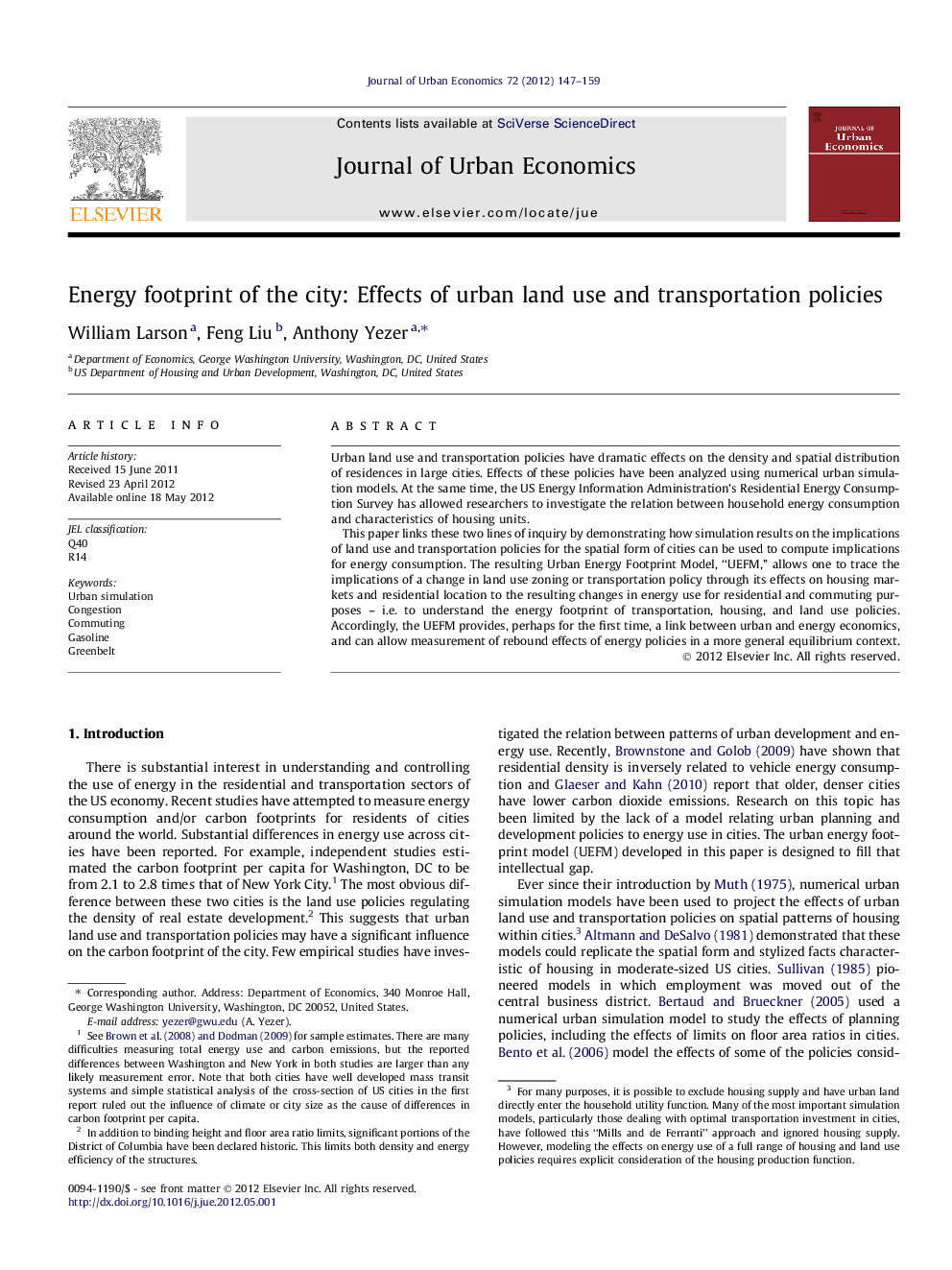| Article ID | Journal | Published Year | Pages | File Type |
|---|---|---|---|---|
| 971224 | Journal of Urban Economics | 2012 | 13 Pages |
Urban land use and transportation policies have dramatic effects on the density and spatial distribution of residences in large cities. Effects of these policies have been analyzed using numerical urban simulation models. At the same time, the US Energy Information Administration’s Residential Energy Consumption Survey has allowed researchers to investigate the relation between household energy consumption and characteristics of housing units.This paper links these two lines of inquiry by demonstrating how simulation results on the implications of land use and transportation policies for the spatial form of cities can be used to compute implications for energy consumption. The resulting Urban Energy Footprint Model, “UEFM,” allows one to trace the implications of a change in land use zoning or transportation policy through its effects on housing markets and residential location to the resulting changes in energy use for residential and commuting purposes – i.e. to understand the energy footprint of transportation, housing, and land use policies. Accordingly, the UEFM provides, perhaps for the first time, a link between urban and energy economics, and can allow measurement of rebound effects of energy policies in a more general equilibrium context.
